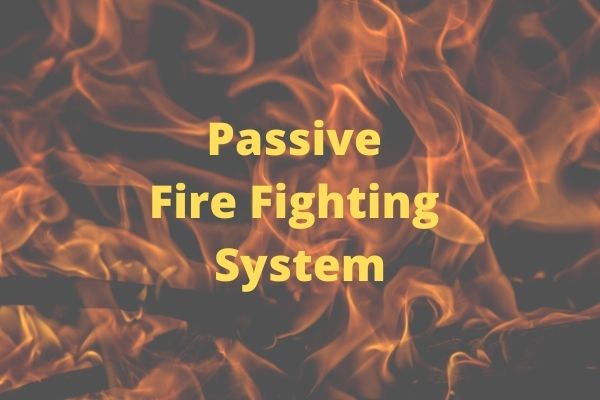Passive Fire Fighting System – Overview
Most people know about the basic fire protection systems like fire sprinklers and extinguishers, but the passive fire protection systems often go unnoticed until the time when fire professionals have to depend on them entirely. In this post, we will talk about passive fire systems, how they work and what are their benefits. Also, you can learn about active fire fighting systems .
What Are Passive Fire Fighting Systems?
Passive fire fighting systems are one of the most effective types of fire extinguishing systems that are always at work due to their efficiency.
Essentially, these systems are based on the compartmentation of fire and prevent collapse via structural fire resistance. When installed in the right manner, they can save the building, its residents, valuables and equipment.
How Do Passive Fire Fighting Systems Work?
Generally, in the passive fire fighting systems, stationary materials are designed to prevent the spread of smoke and fire. They keep the fire limited to the area of its origin and stop it from spreading to the entire building.
When these systems are combined with active fire protection systems, they can extinguish a fire in a safer and faster way and also prevent a lot of damage from happening.
Mostly, the passive fire protection systems are built into the buildings themselves. This may indicate the use of fire retardant materials at the time of constructing the ceiling, walls, and floors of a building. For instance, cinder block walls are very less likely to spread fire than wood-framed walls. Also, the other passive systems can be added after the actual construction of the building has been completed. Some of these passive systems include fire doors, smoke baffles, and fire-resistant glass partitions. They might also include objects like fire curtains that can combine both passive and active systems.
Fire and Smoke Curtains
The fire or smoke curtains are deployed when a smoke or fire is detected. Once triggered, they become an integral part of the fire suppression system.
The objective of a passive fire protection system is to hold the flames and smoke in one area and channel it out of the fire scene. When the flames and smoke can not spread to other areas inside the building, they are more convenient to put out. Hence, lesser damage will be done to the building and its occupants.
Passive fire fighting systems should always be installed evenly in a building. And if possible, a flame retardant material should be used in the construction. Additionally, sensitive areas like elevator shafts and staircases should have an extra layer of passive protection like smoke curtains.
Although passive fire fighting systems can efficiently prevent the fire from spreading, they should be used in conjunction with the knowledge of fire professionals.
There you have it!
This was a brief overview of the passive fire fighting systems. We hope it helps you. Moreover, if you’re looking for the best fire and safety courses, then don’t forget to check out our exclusive fire and safety programs. We are the best fire and safety institute in Karad that can help you in landing great opportunities in the field of fire and safety.


[…] How Do Passive Fire Fighting Systems Work? […]